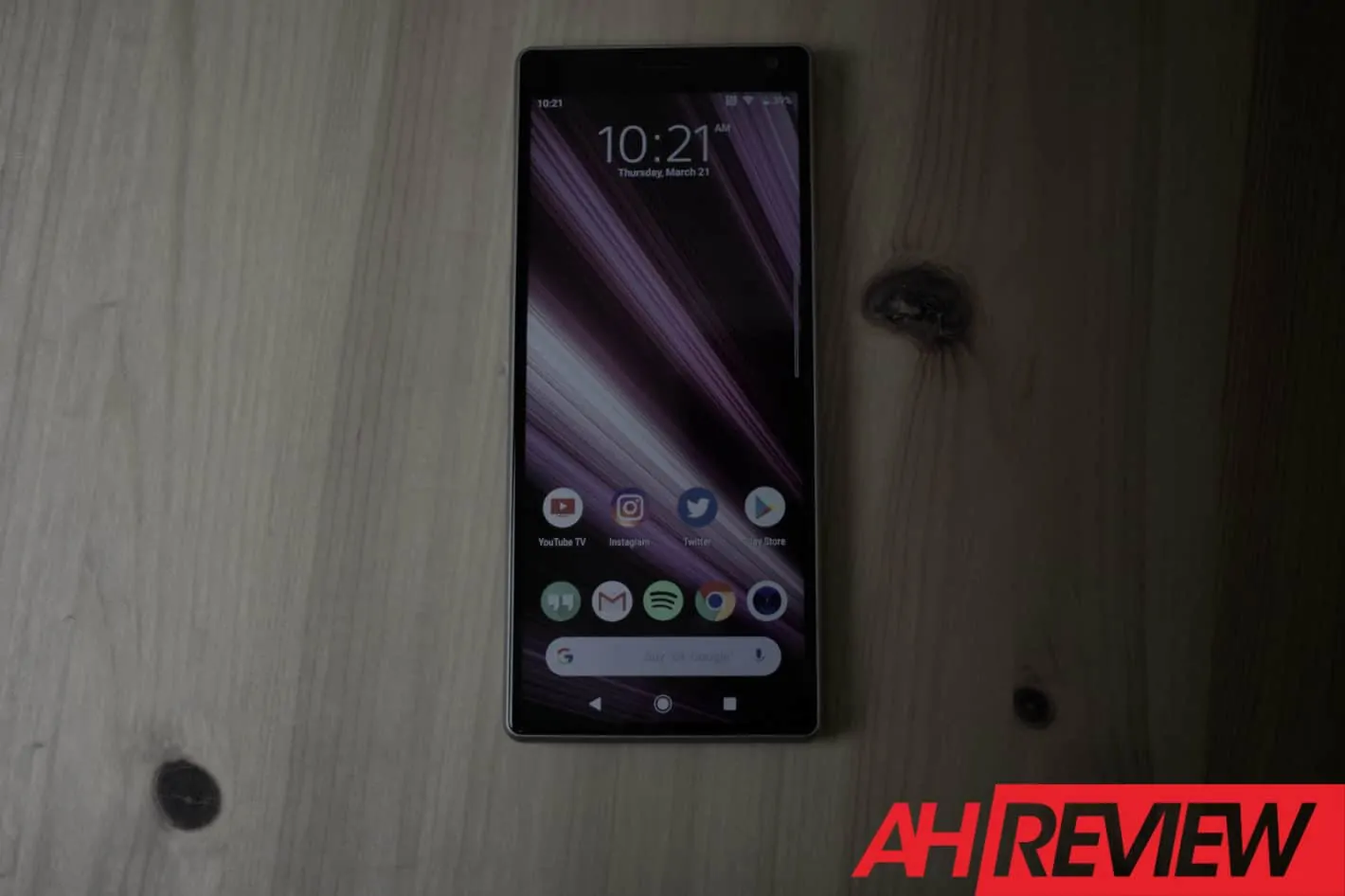The Xperia 10 & 10 Plus Are “Budget” Smartphones For A Reason
The Sony Xperia 10 and Xperia 10 Plus likely look like a few pretty boring smartphones, in 2019. Though, in this price range, that is typically the case. With the extra tall displays on both smartphones, however, are these really worth buying, or worth staying away from? Depending on your needs, it could be either or.
Disclaimer: Android Headlines reviews are designed to cover both the “good” and the “bad” perspectives of all major phones. This was designed to give our readers the good and the bad, separately, instead of it getting lost in the shuffle. This “bad” review focuses on things that would be negative for the Sony Xperia 10 & 10 Plus. If you are specifically interested in the positives of the Sony Xperia 10 family check out our full good review.
The Xperia 10 and Xperia 10 Plus have very tall displays, and it leaves a lot to be desired, when it comes to the experience on both smartphones.
This tall 21:9 aspect ratio means that you are going to have jumbo black bars on the left and right side of the video. Apps like YouTube still let you zoom in, like on a Galaxy S9 with a 18.5:9 aspect ratio. The only issue is that you’re going to have a lot more content cut out of the video. If you are watching a clip from The Late Show with Stephen Colbert his head and whoever he is interviewing, is likely going to be cut off. Which means you are likely not going to zoom in, for video, and thus you are left wit those huge ugly black bars. Which is not a good look.
Not to mention that this is a very tall phone. It is taller than the Samsung Galaxy Note9, while being not quite as wide. Making it a pretty awkward phone to hold onto. It does take some getting used too, but even after using this phone for a couple of weeks, the length of this one is still tough to hold onto. The Xperia 10 isn’t quite as bad, since it is a 6-inch screen versus the 6.5-inch screen on the Xperia 10 Plus, but still an issue.
If all of that wasn’t enough, the Xperia 10 and Xperia 10 Plus smartphones also do not get that bright. You can see them outdoors yes, but barely. And if you are in direct sunlight, you can pretty much give up on trying to use your phone outside. This is a downside to using an LCD panel, and one that has been around for many years. But not being able to use your smartphone outside is a big deal, especially seeing as Summer is right around the corner.
Software is not quite optimized for this tall display
Apps don’t have much issues adapting to this taller display, though one thing we did notice was the fact that apps like Twitter don’t really show more information, versus something like the Google Pixel 3 XL. Which has a slightly smaller display (6.3-inches on the Pixel 3 XL, versus 6.5-inches on the Xperia 10 Plus), but still shows about the same amount of content. This seemed odd, so taking a gander into the display settings, proved that it was on the smallest zoom option. It’s a bit of a downside, considering most smartphones would show more content, if it is a lot taller than other smartphones, like these.
The rest of Android actually adapts quite well. But there are a couple of other glitches we saw during our time using the Xperia 10 and Xperia 10 Plus. These can likely be fixed with software updates as well. For example, if you are watching a YouTube in landscape mode and say you get a notification. Swipe down from the top like normal to see what it was. Swipe down again to pull down the shade. The only thing is that the notification does not lineup with the Quick Settings portion of the shade. The notification shade does go to the right side, making it easier to reach – which makes perfect sense. But the alignment is off, and looks rather weird.
Qualcomm’s Snapdragon 630 & 636 are starting to show their age
The Snapdragon 630 and 636 that power the Xperia 10 and Xperia 10 Plus respectively, are definitely starting to show their age with these new smartphones. These two chipsets were announced back in October of 2017. For a mobile chipset, that is pretty old. These chipsets were on the high-end of the mid-range when they came out over a year ago. But mobile phones have come a long way since then, and these just can’t keep up.
For most day-to-day tasks, the performance on the Snapdragon 630 and 636 are pretty good, for the Xperia 10 and Xperia 10 Plus. But if you are attempting to use multi-window for a while, or do some gaming, that’s when the limits of these processors really start to show.
Sony’s Camera Bokeh could use some work
Sony, like most other smartphones out there, has a dedicated Bokeh mode. But it’s not great. Unlike the Pixel 3 XL, where you can be basically any distance from the object, the Xperia 10 and Xperia 10 Plus force you to be much further away from the object, so it doesn’t give the same appearance. The actual Bokeh effect is actually decent. Sony does a good job at keeping the subject in focus, but it’s not perfect.
What is a bit strange though, is the fact that the “auto” mode still offers better Bokeh effects than the actual Bokeh mode. This is because you don’t need to be several inches away from the subject. The subject also appears to be much more clearer in the auto mode, versus the actual Bokeh mode. It’s a bit of a strange thing to be honest. Bokeh is not going to blow you away on the Xperia 10 or the Xperia 10 Plus. This is something that Sony can hopefully fix, on a future software update.
Sony has had trouble with its cameras in the past few years. It makes the sensors that virtually every smartphone uses, but somehow lags behind almost everyone in the industry. That seems to be the case again with the Xperia 10 and Xperia 10 Plus. Don’t expect that to continue with the Xperia 1, and in the future though. As it now has the Alpha team (the team behind its mirrorless cameras) working with its Mobile division. But when it comes to the mid-range in 2019, the cameras are still somewhat mediocre. We have seen far worse, but we’ve also seen far better.
Camera bumps need to go away
Smartphone manufacturers love the camera bumps on their phones. Consumers on the other hand, are quite the opposite. Camera bumps started appearing a few years ago, after Apple did it with the iPhone. This is one trend that Android OEMs should not have copied. If you ask any consumer, they would rather have a slightly thicker smartphone, that doesn’t have a camera bump, and has a larger capacity battery. LG finally figured that out this year with the new G8 ThinQ and V50 ThinQ.
The camera bump on the Xperia 10 and Xperia 10 Plus are actually pretty large, and it keeps the phone from sitting flat on the table. So if you are using your phone on the table, it is going to wobble from left to right. But, this only happens if you are touching the phone near the top, which is going to be unlikely, since there is the big forehead there. Typing on the keyboard doesn’t bring up this issue, luckily. But just think about how much better this phone would look without a camera bump and a slightly larger battery capacity?
Tiny battery capacities should be outlawed in 2019
Sony has never been one to use a rather large battery capacity in its smartphones, and the Xperia 10 and Xperia 10 Plus are no different. With 2870mAh and 3000mAh capacities respectively. That’s pretty tiny, especially for smartphones that have displays that are over 6-inches. As noted in the “good” review, this does have decent battery life. But it could have been so much better, if Sony had upped the capacity and made the camera flush on the back of the phone.
While a single day of battery seems to be the bar that most smartphone makers are living up to right now, there’s no reason why they can’t give us more than that. Not everyone wants to be recharging their phone every single day, many would love to be able to leave their phones unplugged overnight and not worry about their phone dying.
On top of the small battery capacity, Sony is also not offering up wireless charging. Not part of this is because these do use a metal backside, which makes wireless charging a challenge (not impossible though). But adding wireless charging would at least take some of the sting out of the smaller battery capacities in both the Xperia 10 and Xperia 10 Plus. Wireless charging isn’t fast, but it is definitely convenient. Being able to just put your smartphone down on your bedside table at night, and let it start charging, is definitely a convenience thing. Even if wireless charging is much slower than just plugging it in.
The Mid-Range Deserves Better Than What Sony Is Giving It
The Xperia 10 and Xperia 10 Plus are by no means, the perfect smartphone. They have some issues like every other smartphone on the market. But only one of these issues should keep you from actually picking one up, and that would be the tall display. It’s something that not everyone is going to be able to get past, unfortunately.
Sony Xperia 10 - Amazon - $349 Sony Xperia 10 Plus - Amazon - $420



